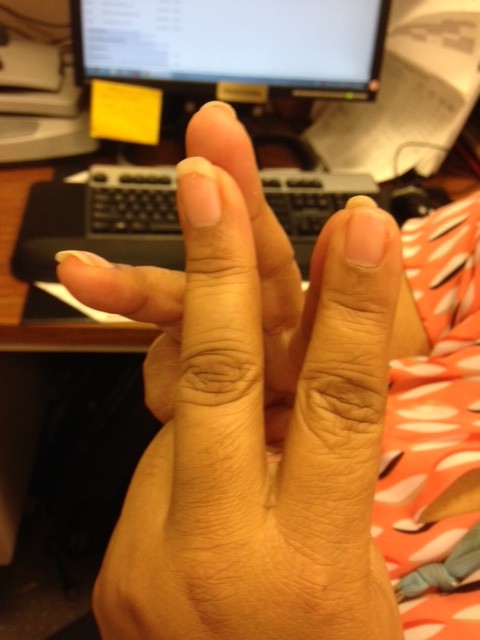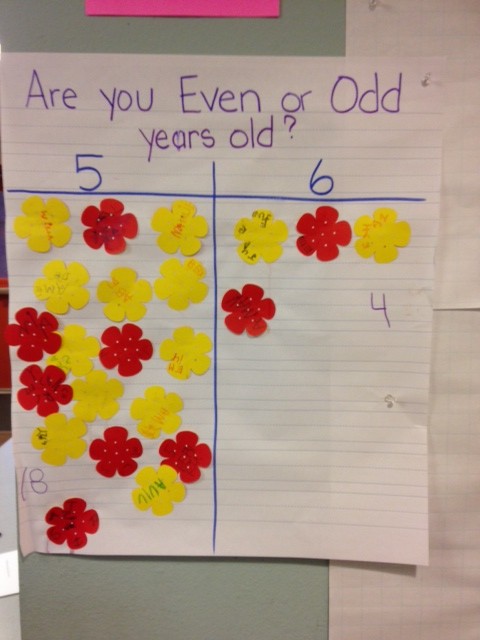Are You Odd or Even?
Last Friday I had the pleasure of visiting my friend B’s kindergarten class in San Francisco, California. I met her teachers and her friends. I saw the class toys and books. B introduced me to the class frogs, birds, and fish. I watched her dance with her friends and then get ready to go on a field trip to the pumpkin patch. It was so lovely and reminded me of how much I loved being a kindergarten teacher. The room was alive with activity and the children were electric with excitement about the day’s activities.
Outside the room, B showed me this poster.
B explained how they learned “odd” and “even”. The teacher asked them to count using their fingers. For “1” you put up your pointer finger on one hand, and for “2” you put up your pointer finger from the other hand. If both fingers are up, then they are partners and you put them together. Every number that has a partner (2, 4, 6) is “even” and every number that is alone is odd (1, 3, 5). You continue that way, middle fingers, ring fingers, and pinkies. In the picture below, the number 5 is represented by the ring finger that does not have a partner. Therefore, it is odd.
 I know that these children are a bit older than many of yours and most of them already have a strong number sense, but I still like the idea of this even for younger children. First, I appreciate that the age board is a departure from the typical Birthday Boards that I usually see and second, the counting system is interesting as it reinforces one-to-one correspondence, is easy to do and can be expanded as children get older.
I know that these children are a bit older than many of yours and most of them already have a strong number sense, but I still like the idea of this even for younger children. First, I appreciate that the age board is a departure from the typical Birthday Boards that I usually see and second, the counting system is interesting as it reinforces one-to-one correspondence, is easy to do and can be expanded as children get older.
B explained to me that she was “odd” because she was 5. I asked her what would happen next week when she celebrates her 6th birthday. She looked at me like I was a simpleton and said, “I will be six and move to the other side of the board.”
Duh.

I love the idea of learning \”even\” and \”odd\” by counting on your fingers, then pairing them up! This is just so smart and creative. Children can use this trick to practice recognizing even and add numbers wherever they go. I can also remember learning math tricks with my fingers as a child. I think there\’s something about using hands as a guide that really helps new ideas and concepts \”stick!\”
I love the way you explain the numbers odd and even. Odd is alone and even is a pair. I think young children will understand this way better.
I agree! I notice many of my kids using their fingers to count, even when grouping things together.
I really like how you explain even and odd, you do it in a way young children are really able to understand.
I think even very small children will get this concept using fingers to count even and odds.
This is definitely a great idea for this age group of children
This is a great idea for any age group that understands numbers.
Awesome idea, using fingers to count always helps my kids grasp the bigger picture.
This seems like such a great idea to do with preschoolers and introducing math vocab words such as even and odd. Super creative and simple idea!